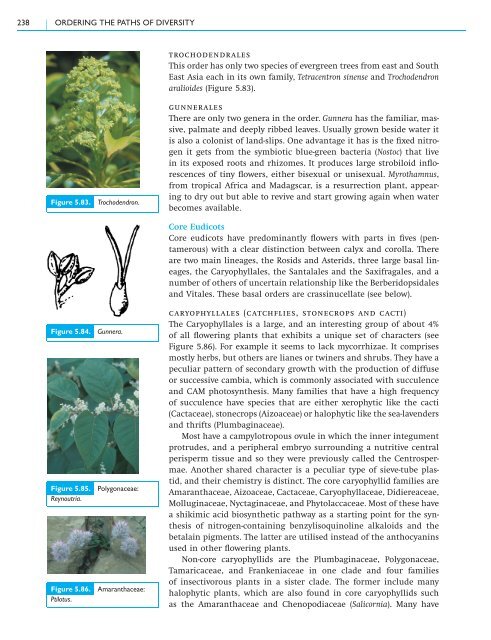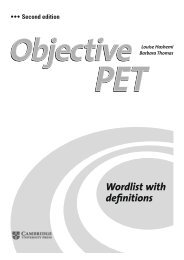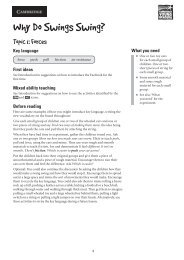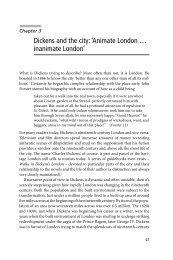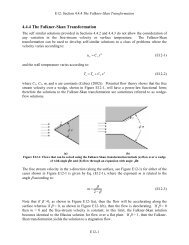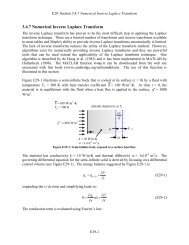5.3 Class Magnoliopsida – flowering plants - Cambridge University ...
5.3 Class Magnoliopsida – flowering plants - Cambridge University ...
5.3 Class Magnoliopsida – flowering plants - Cambridge University ...
You also want an ePaper? Increase the reach of your titles
YUMPU automatically turns print PDFs into web optimized ePapers that Google loves.
238 ORDERING THE PATHS OF DIVERSITY<br />
Figure 5.83. Trochodendron.<br />
Figure 5.84. Gunnera.<br />
Figure 5.85. Polygonaceae:<br />
Reynoutria.<br />
Figure 5.86. Amaranthaceae:<br />
Ptilotus.<br />
trochodendrales<br />
This order has only two species of evergreen trees from east and South<br />
East Asia each in its own family, Tetracentron sinense and Trochodendron<br />
aralioides (Figure 5.83).<br />
gunnerales<br />
There are only two genera in the order. Gunnera has the familiar, massive,<br />
palmate and deeply ribbed leaves. Usually grown beside water it<br />
is also a colonist of land-slips. One advantage it has is the fixed nitrogen<br />
it gets from the symbiotic blue-green bacteria (Nostoc) that live<br />
in its exposed roots and rhizomes. It produces large strobiloid inflorescences<br />
of tiny flowers, either bisexual or unisexual. Myrothamnus,<br />
from tropical Africa and Madagscar, is a resurrection plant, appearing<br />
to dry out but able to revive and start growing again when water<br />
becomes available.<br />
Core Eudicots<br />
Core eudicots have predominantly flowers with parts in fives (pentamerous)<br />
with a clear distinction between calyx and corolla. There<br />
are two main lineages, the Rosids and Asterids, three large basal lineages,<br />
the Caryophyllales, the Santalales and the Saxifragales, and a<br />
number of others of uncertain relationship like the Berberidopsidales<br />
and Vitales. These basal orders are crassinucellate (see below).<br />
caryophyllales (catchflies, stonecrops and cacti)<br />
The Caryophyllales is a large, and an interesting group of about 4%<br />
of all <strong>flowering</strong> <strong>plants</strong> that exhibits a unique set of characters (see<br />
Figure 5.86). For example it seems to lack mycorrhizae. It comprises<br />
mostly herbs, but others are lianes or twiners and shrubs. They have a<br />
peculiar pattern of secondary growth with the production of diffuse<br />
or successive cambia, which is commonly associated with succulence<br />
and CAM photosynthesis. Many families that have a high frequency<br />
of succulence have species that are either xerophytic like the cacti<br />
(Cactaceae), stonecrops (Aizoaceae) or halophytic like the sea-lavenders<br />
and thrifts (Plumbaginaceae).<br />
Most have a campylotropous ovule in which the inner integument<br />
protrudes, and a peripheral embryo surrounding a nutritive central<br />
perisperm tissue and so they were previously called the Centrospermae.<br />
Another shared character is a peculiar type of sieve-tube plastid,<br />
and their chemistry is distinct. The core caryophyllid families are<br />
Amaranthaceae, Aizoaceae, Cactaceae, Caryophyllaceae, Didiereaceae,<br />
Molluginaceae, Nyctaginaceae, and Phytolaccaceae. Most of these have<br />
a shikimic acid biosynthetic pathway as a starting point for the synthesis<br />
of nitrogen-containing benzylisoquinoline alkaloids and the<br />
betalain pigments. The latter are utilised instead of the anthocyanins<br />
used in other <strong>flowering</strong> <strong>plants</strong>.<br />
Non-core caryophyllids are the Plumbaginaceae, Polygonaceae,<br />
Tamaricaceae, and Frankeniaceae in one clade and four families<br />
of insectivorous <strong>plants</strong> in a sister clade. The former include many<br />
halophytic <strong>plants</strong>, which are also found in core caryophyllids such<br />
as the Amaranthaceae and Chenopodiaceae (Salicornia). Many have


